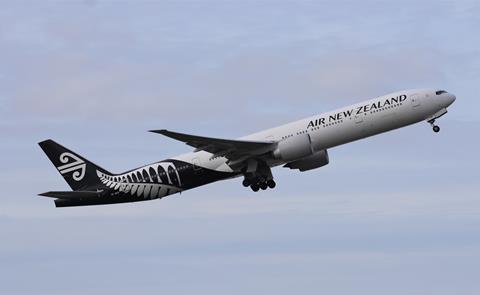Air New Zealand posted a reduced pre-tax profit of NZ$185 million ($114 million) for the first six months of its financial year and has reiterated a warning that its performance will be “markedly lower” than that in the second half ending June 2024.
The Star Alliance carrier had already in December warned of softer profits during the first half owing to competitive pressures and softer demand for leisure travel, indicating profits for the six months ending December 2023 would be at the lower end of its NZ$180-230 million guidance. The NZ$185 million compares with a profit of NZ$299 million at the same stage in the previous year.

Its bleak prognosis for the second half means ANZ is guiding for a full-year pre-tax profit in the range NZ$200-240 million – implying a profit range of only NZ$15-55 million for the second half.
ANZ chair Therese Walsh says: “We knew this year would be tougher than the last, when pent-up levels of demand and industry-wide capacity constraints drove one of the strongest financial results in our history.
“And while we have reported a solid first-half result, it is against the backdrop of significant ongoing supply chain issues, particularly the additional Pratt & Whitney engine maintenance requirements on our A321neo fleet, which will see up to five of our newest and most efficient aircraft out of service at any one time across the next 18 months at least.”
The airline estimates it will incur temporary cost headwinds of around NZ$35 million in the second half in countering these engine maintenance issues, together with wider supply chain and inflationary impacts.
ANZ passenger revenues climbed more than a fifth to NZ$3.1 billion in the first half against a backdrop of capacity increased by 29%.
However, alongside the cost pressures, the carrier reiterates a warning first given on 19 February that it is entering a worsening revenue environment, evident in a deteriorating forward bookings curve.
”Intense international competition features heavily in the current environment, particularly for North America where our US competitors have not yet returned to China at scale, and for now have directed some of that additional capacity to the New Zealand market, putting pressure on yields,” says Walsh.
“The business is pulling multiple levers to mitigate the impact of these headwinds, and this is a key focus for the team.”


























